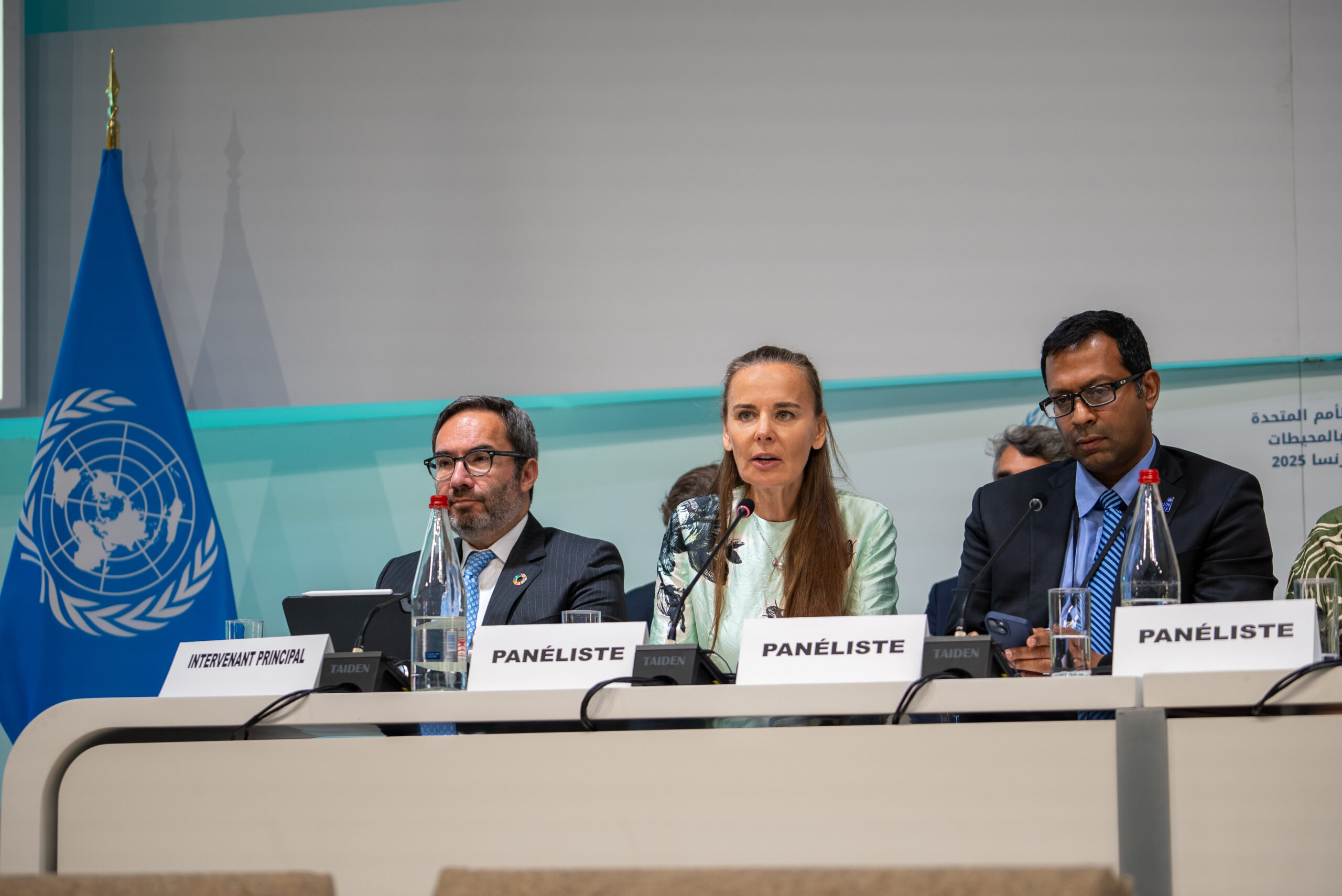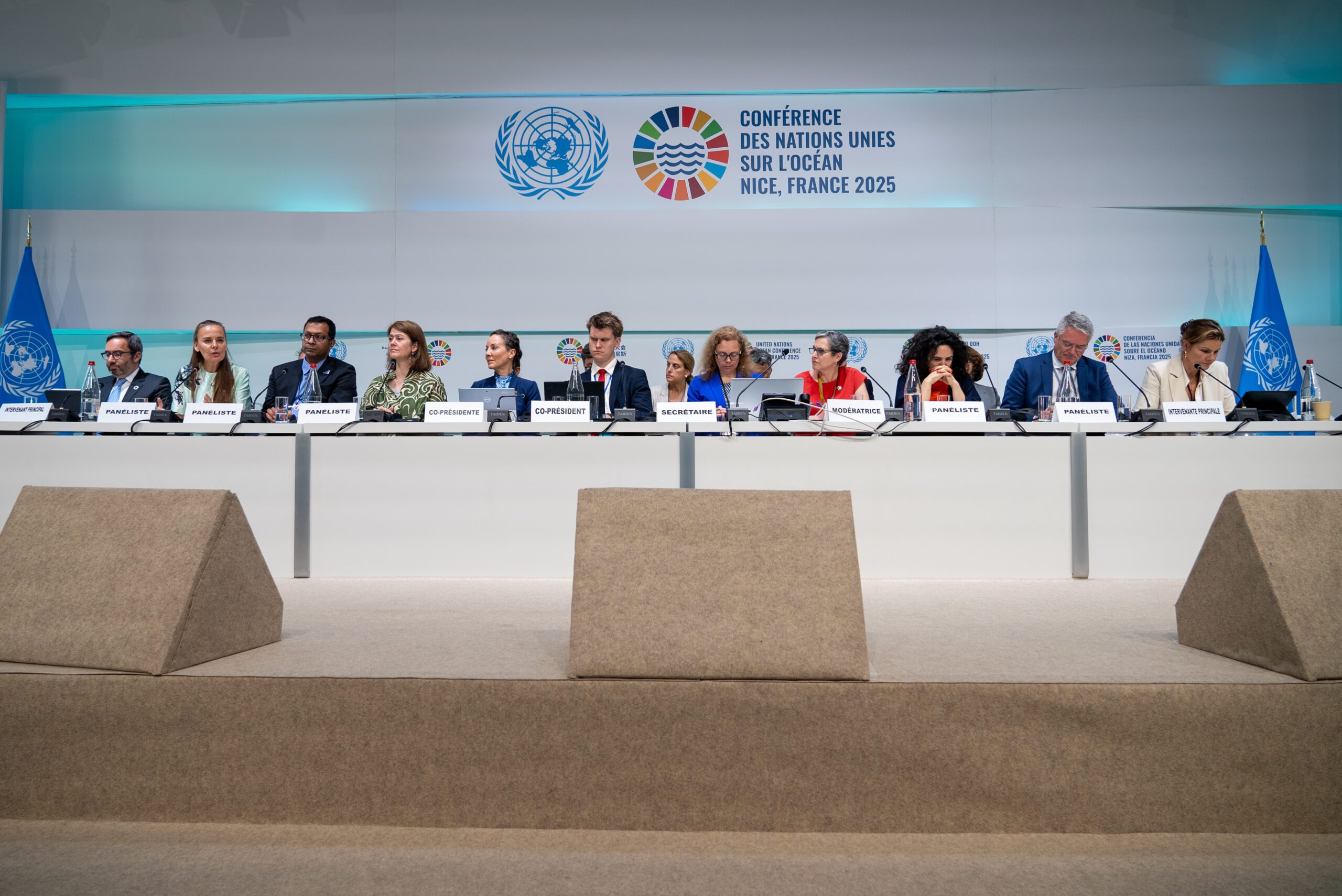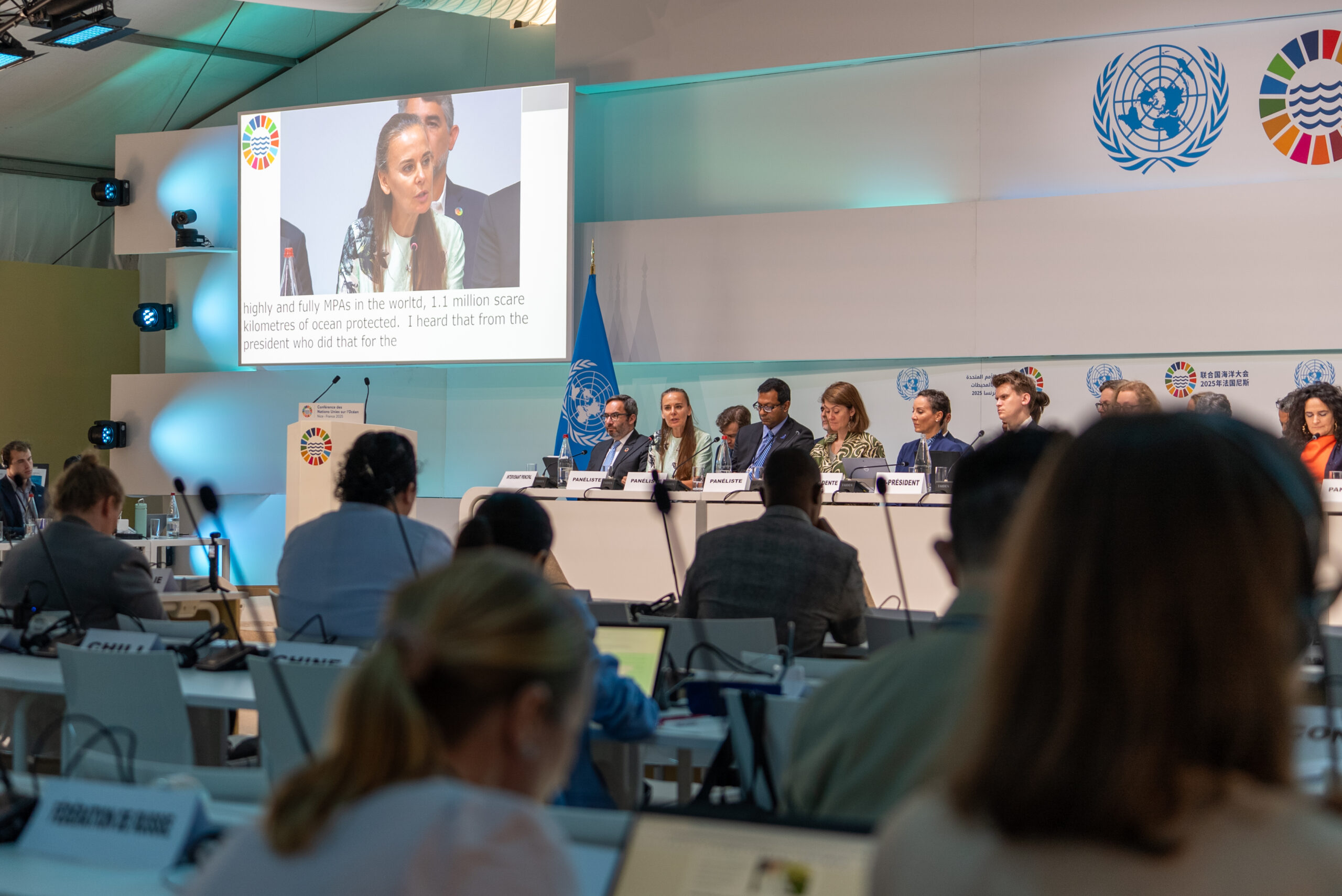― By Dona Bertarelli
Excerpt from remarks delivered at the UN Ocean Conference (UNOC3), Ocean Action Panel 3, June 11, 2025.
An Existential Crisis for the Ocean
We are facing an existential crisis for the ocean. But the root isn’t just ecological—it’s relational.
Somewhere in the last century, we began to see Nature – and the ocean particularly – not as something we are part of, but as a commodity – something to be exploited, extracted, consumed, or controlled, for cheaper, faster, and more widespread access. This disconnect is at the heart of our social, economic, and environmental crises.
Let’s put things into perspective. Earth is 4.6 billion years old. If we scale that to 46 years, modern humans have been here for just one day. The industrial revolution began one second ago. And in that single second, we have destroyed more than half of the world’s forests. In the ocean, we have wiped out over 90 % of large fish, crippled coral reefs, and filled the sea with plastic. And now, we are even pursuing deep‐sea mining – a new frontier of extraction, with unknown but potentially catastrophic consequences, and for little economic benefit.
Across the planet, life that took millions of years to evolve is vanishing in a blink of an eye.
Ocean Protection as Smart Investment
So, we must stop framing ocean protection as a luxury. It’s not charity. It’s not optional. It’s the smartest, most cost-effective investment we can make — for climate, for food, for security, for peace, for our health, for our future and the future of our children.
We must move from extraction to reciprocity. From a mindset of “taking” with no accountability, to one of respect, stewardship, and regeneration.
We talk about 30×30*, blue economies, and ocean-based climate solutions, but the funding that underpins all of that — particularly for marine protection and biodiversity — is fragmented, inadequate, and painfully slow to reach those who can deliver results.
The Bloomberg Report, released just last week, shows that we are currently investing $1.2 Billion into ocean conservation while the gap to reach the 30×30 Target is $15 Billion per Year.
Driving Ambition & Overcoming Barriers
Our biggest tool to raise the ambition is political action. Let me point to the incredible leadership of President Brotherson of French Polynesia, who just yesterday announced one of the largest highly & fully Marine Protected Areas (MPAs) in the world (1.1 million km²), with the ambition to continue to expand the protection.
What I believe I heard from President Brotherson is that he did this for the benefit and future of his people, not just for the ocean. Once again, ocean and people are intricately interconnected.
Because finance, science, and technology are essential, but they need political will to unlock them, align them, and drive systemic change.
Our biggest shortfall is the fear of change. Too many decisions are still shaped by the fear of economic disruption. Fear of political backlash. Fear of short-term costs. And yet, the far greater risk is inaction — to our economies, our communities, and to life itself. We need courage to face that truth and to embrace the transformation required.
Our biggest challenge is building the will and the capacity to scale up. We know what works:
The most effective tool we have is highly and fully protected marine areas (MPAs). They offer proven benefits for both nature and people: restoring biodiversity, supporting fisheries, and building climate resilience.
Marine protected and conserved areas (MPCAs) generate a return of a conservative $3–4 for every $1 invested through ecosystem services and fishery benefits — depending on the region and management quality.
Protecting 30 % of the ocean could yield benefits of up to $926 billion by 2050. Yet only 8.3 % of the ocean has some kind of protection with only 2.8 % being fully or highly protected.
Despite this evidence, the current financial flows are out of step with the scale and urgency of the challenge.
Today, less than 9 % of biodiversity-related development finance reaches marine and coastal ecosystems.
All sources combined — public, philanthropic, and private — deliver under 1 % of global climate and biodiversity finance to the ocean.
And we are spending just $3 billion a year — against an estimated need of $175 billion annually to achieve SDG 14, and the ocean targets of the Global Biodiversity Framework.
Now imagine if we reversed the burden of proof:
Instead of conservationists having to justify protection, what if exploiters had to prove they caused no harm? That single shift would unlock private finance and dramatically change the incentives.
The world’s ocean is one of our most valuable natural resources. Not only in economic terms, but also for its cultural, ecological, and intrinsic value. Yet, climate change and the unsustainable use of ocean resources threaten its health, and the incredible value it generates.
No single organisation, sector or country can tackle these issues alone.
So, let’s work together and move beyond commitments on paper to measurable impacts in the water — until marine life and human well-being are truly in balance.
Acting now is not just strategic; it is essential to sustain our livelihoods — and all life on Earth.
*The 30×30 target establishes a global plan to protect 30% of Earth’s lands, ocean, coastal areas, and inland waters by 2030. It was adopted by 196 countries at COP15 in December 2022. This ambitious goal focuses global conservation efforts as, by dedicating a significant portion of the natural world to conservation, it aims to preserve the diverse life forms that inhabit these areas, ensuring their survival for generations to come. This framework emphasizes the urgent need for collective global action and acts as a call to unite countries, communities, and individuals in preserving the health and diversity of the planet’s ecosystems through a holistic approach.



